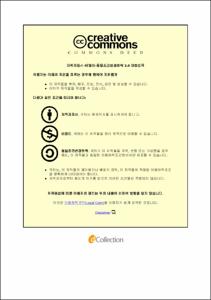스토리텔링을 활용한 한국어 표현교육 방안 연구
= A study on the teaching method of Korean expression using storytelling : Focused on documentary text
- Type
- Thesis
- Alternative Title
- 다큐멘터리 텍스트를 중심으로
- Department
- 대학원 한국어문학과
- Issued Date
- 2011
- Publisher
- 한성대학교 대학원
- Files in This Item:
-
-
Download
 000001094730.pdf
기타 데이터 / 9.01 MB / Adobe PDF
000001094730.pdf
기타 데이터 / 9.01 MB / Adobe PDF
-
Items in Repository are protected by copyright, with all rights reserved, unless otherwise indicated.